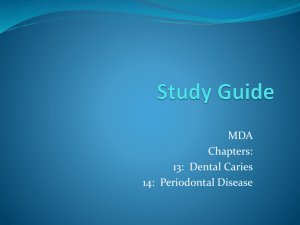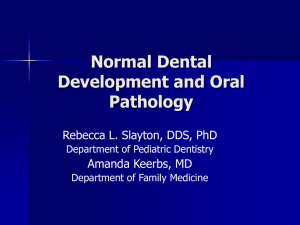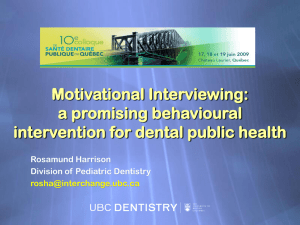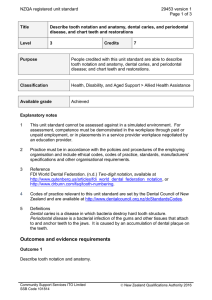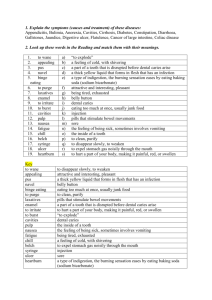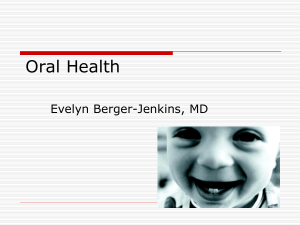PSILENT PRODUCTIONS
advertisement
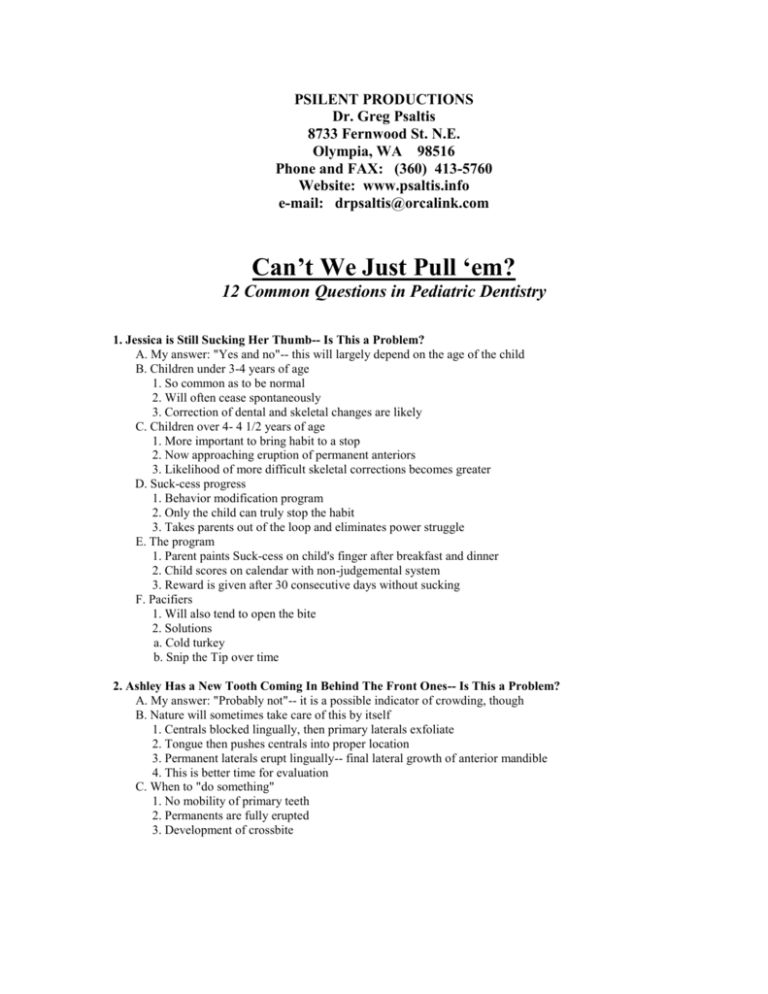
PSILENT PRODUCTIONS Dr. Greg Psaltis 8733 Fernwood St. N.E. Olympia, WA 98516 Phone and FAX: (360) 413-5760 Website: www.psaltis.info e-mail: drpsaltis@orcalink.com Can’t We Just Pull ‘em? 12 Common Questions in Pediatric Dentistry 1. Jessica is Still Sucking Her Thumb-- Is This a Problem? A. My answer: "Yes and no"-- this will largely depend on the age of the child B. Children under 3-4 years of age 1. So common as to be normal 2. Will often cease spontaneously 3. Correction of dental and skeletal changes are likely C. Children over 4- 4 1/2 years of age 1. More important to bring habit to a stop 2. Now approaching eruption of permanent anteriors 3. Likelihood of more difficult skeletal corrections becomes greater D. Suck-cess progress 1. Behavior modification program 2. Only the child can truly stop the habit 3. Takes parents out of the loop and eliminates power struggle E. The program 1. Parent paints Suck-cess on child's finger after breakfast and dinner 2. Child scores on calendar with non-judgemental system 3. Reward is given after 30 consecutive days without sucking F. Pacifiers 1. Will also tend to open the bite 2. Solutions a. Cold turkey b. Snip the Tip over time 2. Ashley Has a New Tooth Coming In Behind The Front Ones-- Is This a Problem? A. My answer: "Probably not"-- it is a possible indicator of crowding, though B. Nature will sometimes take care of this by itself 1. Centrals blocked lingually, then primary laterals exfoliate 2. Tongue then pushes centrals into proper location 3. Permanent laterals erupt lingually-- final lateral growth of anterior mandible 4. This is better time for evaluation C. When to "do something" 1. No mobility of primary teeth 2. Permanents are fully erupted 3. Development of crossbite 3. Isn't 8 A Little Early For Orthodontics? A. My answer: "Probably not"-- timing is often critical in some situations B. Early orthodontic situations that lend themselves to early treatment 1. Skeletal descrepancies a. Class II b. Class III c. Deep bites and Open bites 2. Functional problems a. Crossbites b. Ectopic eruption 3. Dental problems a. Severe crowding b. Congenitally missing teeth c. Ankylosis d. Supernumeraries C. Rationales for early treatment 1. Enthusiastic patient 2. Take advantage of growth 3. Prevent trauma 4. Esthetic improvements 4. My Husband Wants No Crowns-- Can These Teeth Just Be Filled? A. My answer: "Probably not"-- it may not be the correct thing to do B. Crown indications 1. Large lesion with or without loss of space 2. Expectation of life of the restoration is 4 or more years 3. More than 2 surfaces involved with caries C. Technique 1. Reduce occlusal surface about 1-2 mm 2. Remove all caries—check for pulpal involvement 3. Perform pulpotomy or place cavity liner (glass ionomer) 4. Reduce mesial and distal surfaces with thin fissure bur 5. Place counter-bevels on buccal-occlusal and lingual-occlusal anges 6. Select snug-fitting crown (not too loose/not too tight) 7. Check for proper length—if more than 1mm tissue blanch, trim crown 8. Contour and crimp crowns for excellent adaption 9. Cement with appropriate luting cement 5. School Pictures Are Tomorrow, So Would You Treat Diana's Front Tooth First? A. My answer: "No" (not the top priority and may disrupt the success of future visits) B. The long-term strategy: 1. Build on successful visits 2. Start simple and painless 3. Prioritize for function and longevity of teeth 4. Keep them coming in for complete care 6. I Will Not Allow Any X-rays For My Child A. My answer: "I can agree to disagree, but I cannot see your child"" B. Without radiographs, no examination is complete C. Potential problem areas 1. Cysts 2. Supernumerary or congenitally missing teeth 3. Pathology, such as odontomas, etc. D. Our criteria 1. A minimum of bitewings every other year 2. We do not insist on annual x-rays when caries rates are low 2 7. Will the Shot Hurt When You Fill Ben's Tooth? A. My Answer: "I don't know" B. Some scream with prophy cups, others say nothing during extractions C. My injections: 1. Use appropriate, positive terminology a. I "put teeth to sleep" b. I don't "give shots" c. This is not deceptive and it does work 2. Techniques a. Use topical anesthetic b. I don't show the child the needle c. Talk throughout procedure, using positive words to describe sensations 3. Types of injections a. Mandibular infiltrations b. Bilateral mandibular blocks are OK c. Palatals go through papillae 4. Onset by OnPharma a. Buffering system to neutralize acidity of local anesthetic b. Takes “sting” out of injections and shortens uptake time for anesthesia c. Mixed chairside with unique “pen” 8. Can I Come Here For Treatment? A. My Answer: "No" B. What are they saying? 1. We like what you do here 2. This experience is different 3. I want what you provide C. How does this happen? 1. Pay attention to what patients like about dental offices a. This is usually not a technical factor b. They want to have a “good feeling” in the office 2. Pay attention to what patients would change about a dental office a. This is also not usually technically related b. They are looking for relationships 9. Why is Erin the only one in her class who hasn't lost a tooth? A. My answer: "This is common and well within normal growth limits" B. Let's define terms 1. Average= a human invention that indicates the mid-point of a series of data 2. Normal= a range of possibilities within a series of data C. Some other thoughts 1. We see 4 year olds with permanent teeth and 9 year olds without any 2. Many children get their molars first, then incisors, but this is less noticeable 10. Does Bill Really Need To Come For Checkups Each Six Months? A. My answer: "Yes"-- for children every examination is a new patient exam B. In addition to caries detection, children need development checked 1. Exfoliation and eruption 2. Habits that may alter function 3. Skeletal discrepancies 4. Ankylosis 5. Fusion and gemination 6. Pathology 3 11. My Other Children Never Had Cavities-- How Can Nicole Have Six? A. My answer: "It's common" B. We emphasize the variation in oral bacterial populations C. There are often non-dental considerations 1. Parents have less control with each consecutive child 2. Vigilance decreases with more children 12. I've Been Told That Nursing Can't Hurt Michael's Teeth-- Is This True? A. My answer: "No"-- ad lib nursing in conjunction with carbhoydrates can be harmful B. It is important to identify the parent's issue 1. If nursing is important, focus on restorative plan and deal with nursing later 2. If person is truly open to information, explain relationship of nursing to caries C. It is difficult to NOT fall into the "they are wrong" attitude 4

